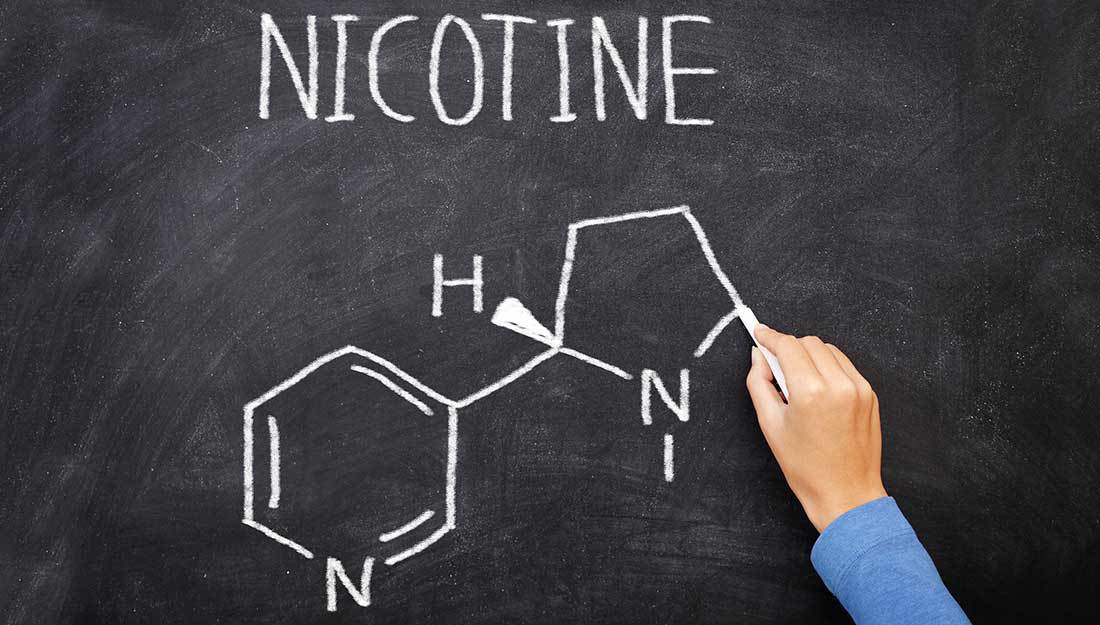

Nicotine is an alkaloid that is found in the stems, leaves and fruits of some plants. Most of it is contained in tobacco. Also in small doses, nicotine is present in eggplants, potatoes, tomatoes and some other plants used in food. Also this substance in small amounts is regularly produced by the liver.
Non-toxic nicotine derivative – nicotinic acid – is a participant in the metabolism in the human body. It affects fat and carbohydrate metabolism, which is necessary for tissue growth and hematopoiesis. And nicotine itself stimulates the production of certain substances in the brain, activating its work and causing a sense of pleasure. High doses of this alkaloid are toxic and cause disruption of the brain, liver, heart and circulatory system.
History of application
In the past centuries, nicotine has been widely used to treat many diseases. It was used as a sedative and anti-migraine remedy, prescribed for colds and malaria. With the development of medicine and the study of the effects of medications, the attitude towards nicotine has changed. In some cases, the harm from its use may exceed the potential benefit. So now the scope of nicotine use is low.
Modern application possibilities
Currently, the main indication for the use of medical purified nicotine is nicotine replacement therapy. It is used to alleviate the withdrawal syndrome (or withdrawal syndrome) in people with nicotine addiction.
This is necessary with a gradual or one-stage refusal to smoke, if the person wants to reduce the daily number of cigarettes or switch to tobacco products with a lower concentration of nicotine. In addition, drugs for nicotine replacement therapy can be used occasionally to help withstand a forced break in smoking during long meetings, air travel and in a number of other situations.
Nicotine replacement therapy is recommended by WHO, its action is confirmed by 150 studies conducted on 50 000 patients.
Risks
Without sufficient will and will power, the attempt to quit cigarettes even when using drugs with medical nicotine will not give the expected result. Quitting smoking should cope with the residual manifestations of the withdrawal syndrome, develop new habits, and sometimes change the way of life. In addition, it is important to choose the dose of nicotine correctly and, if necessary, consult a doctor.
Types of Release Forms
Preparations of NZT are available in several dosage forms, and the concentration of medical nicotine in them may differ. Different methods of their use and duration of action help to choose a scheme of nicotine replacement therapy individually.
The use of a patch is a method of continuously maintaining the necessary concentration of nicotine in the blood. Usually it is used once a day. Sublingual dissolving tablets and spray are designed to quickly fill the nicotine deficiency. This is useful in cases of acute cravings during the period of refusal of cigarettes or forced refraining from smoking. Chewing gums with nicotine have a similar effect. In addition to the main effect, such drugs help to physically escape from craving for smoking.
Electronic cigarettes with nicotine have been poorly studied and are not included in the WHO recommended list of drugs for nicotine replacement therapy. Moreover, recent studies have shown the negative effects of this type of substitution of cigarettes.
Principle of nicotine replacement therapy
NRT is carried out in 2 stages. On the first person uses drugs with medical nicotine at every occurrence of the desire to smoke. This helps to cope with the psychological dependence on cigarettes. Thus, it becomes possible to obtain the required dose of nicotine without inhaling harmful tobacco smoke, and to mitigate the withdrawal syndrome. So a man becomes accustomed to dispense with cigarettes and changes his habits.
After the adaptation period, the phase of a gradual decrease in the daily amount of nicotine is started, the intervals between the use of the preparations are extended. As a result, we manage to cope with physical dependence.
